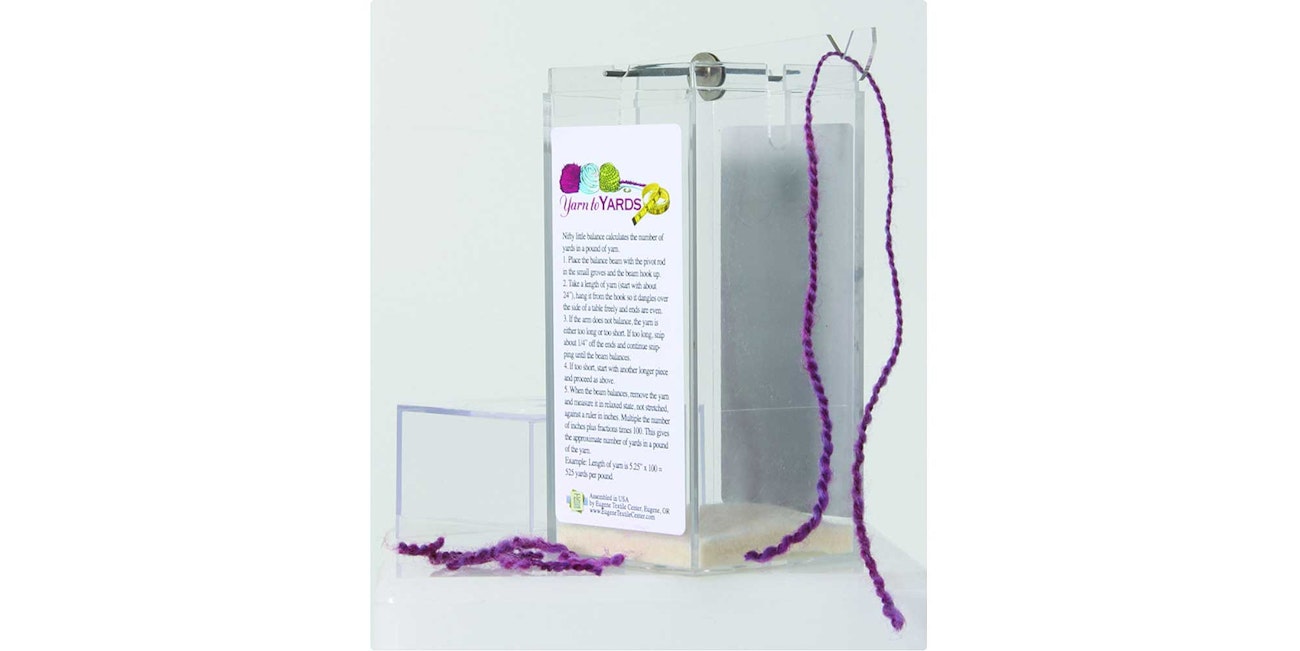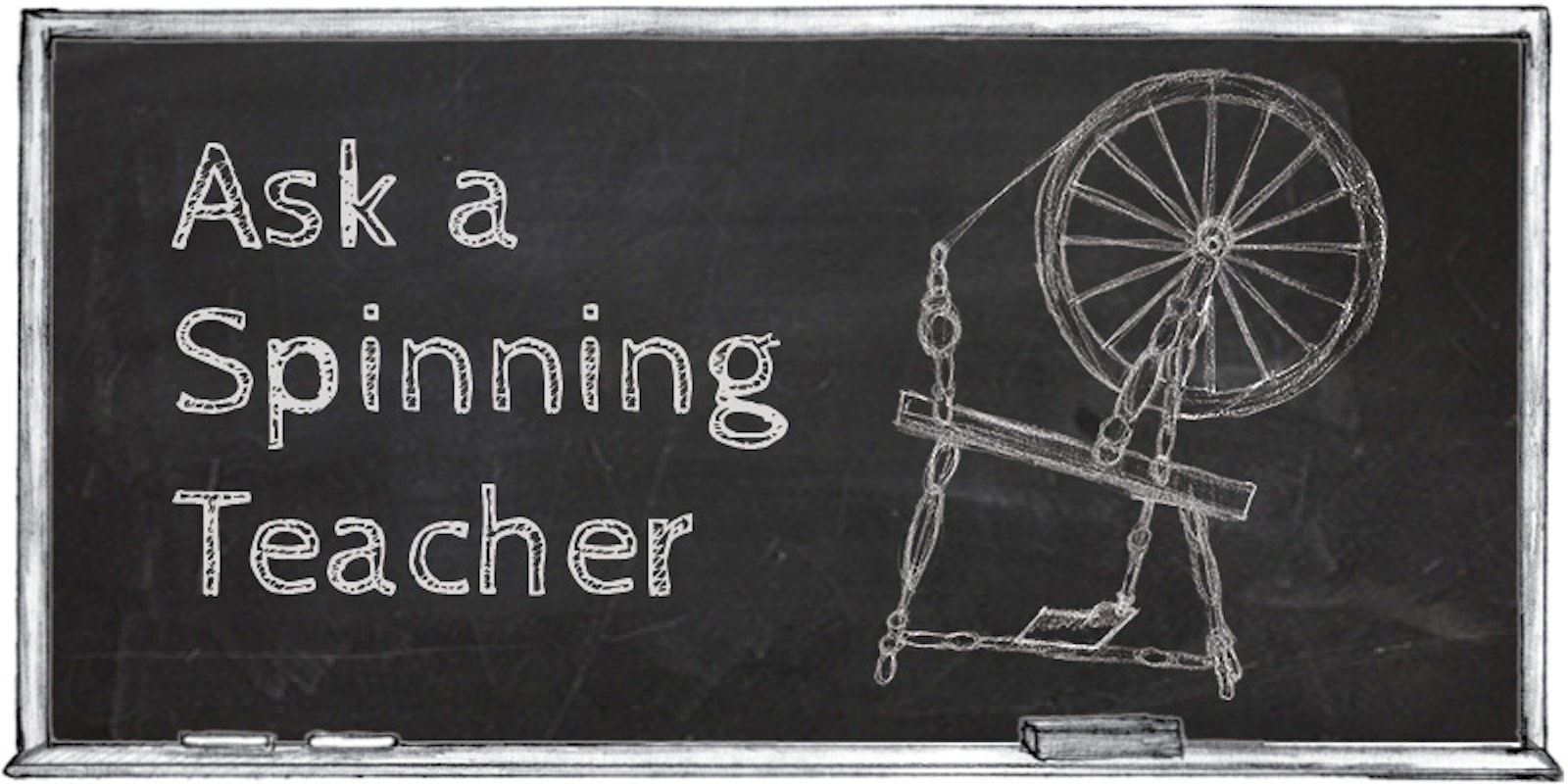In an excerpt from the Spin Off Fall 2016 article “Ask a Spinning Teacher: Numbers,” Amy Tyler fills us in on what all of those confusing numbers for measuring fiber mean. Here, she clarifies the many systems used for measuring knitting yarn. Whether you’re measuring handspun or millspun, here are some of the most common classifications.
Grist
Grist is not a measurement of thickness, per se, but a measure of the yards per pound—or meters per kilogram—of a quantity of yarn. Sometimes grist is estimated from a short length of yarn with the use of a McMorran yarn balance. Grist can also be obtained by directly measuring the full length of yarn and the full weight of yarn. It is commonly abbreviated as ypp. You may see grists of 500 to 8,000 yards per pound (or even lower or higher).
 McMorran yarn balance. Photo by Joe Coca.
McMorran yarn balance. Photo by Joe Coca.
Some fibers are denser than others, and some spinning techniques create denser yarns than others; a grist of 1,000 yards per pound of worsted-spun Lincoln wool will not be the same thickness as 1,000 yards per pound of woolen-spun Merino wool. But for a given fiber and spinning technique, the higher the grist (ypp), the thinner the yarn.
 Yarn measuring systems
Yarn measuring systems
Wraps per Inch
Instructions for measuring wraps per inch (wpi) typically sound something like this: Wrap the yarn around a ruler or similar device—not too tight, not too loose—with wraps touching but not squished together. Wrap for 1 or 2 inches, and then count the wraps in 1 inch.
Values of wpi can range anywhere from 2 to 50 or beyond. Theoretically, the higher the number of wpi, the thinner the yarn. Although wpi is an actual measurement, it is not a terribly reliable measurement. It provides only a rough guideline as to yarn thickness.
 Craft Yarn Council table
Craft Yarn Council table
Weight: Knitting Yarns
When I first took up knitting, I most often saw the thickness of millspun yarns categorized by “weight.” From thinnest to thickest, those weight categories were: lace, fingering, sport, double knitting (DK), worsted, heavy worsted (or Aran), bulky, and super bulky. The terms you learned may differ.
In the United Kingdom, you might have seen yarn thickness categorized by the number of plies in a yarn. Assuming all single strands of the same thickness, the greater number of plies, the thicker the yarn. The problem is that not all single strands are the same thickness.
In an attempt to standardize categories of yarn thickness, the Craft Yarn Council has ascribed numbers to various yarn weights: 0, 1, 2, 3, 4, 5, 6. These numbers are still only categories, but they are in numerical order: the higher the number, the thicker the yarn. But wait . . . those systems are only for measuring knitting and crochet yarns. Read Amy’s article on weaving yarns here.
RESOURCES
Craft Yarn Council, craftyarncouncil.com.
Tyler, Amy. “Debunking the Wraps-per-Inch Myth,” Spin Off, Fall 2010, pp. 32–34.
Amy Tyler lives in Lake Ann, Michigan, where she loves numbers as much as she loves spinning. She counts the steps every time she climbs the stairs. But she’s pretty laid-back about numbers and fiber. She writes about fiber, numbers, and not numbers in her blog, www.stonesockblog.blogspot.com.
Originally published December 27, 2018; updated September 4, 2023.

